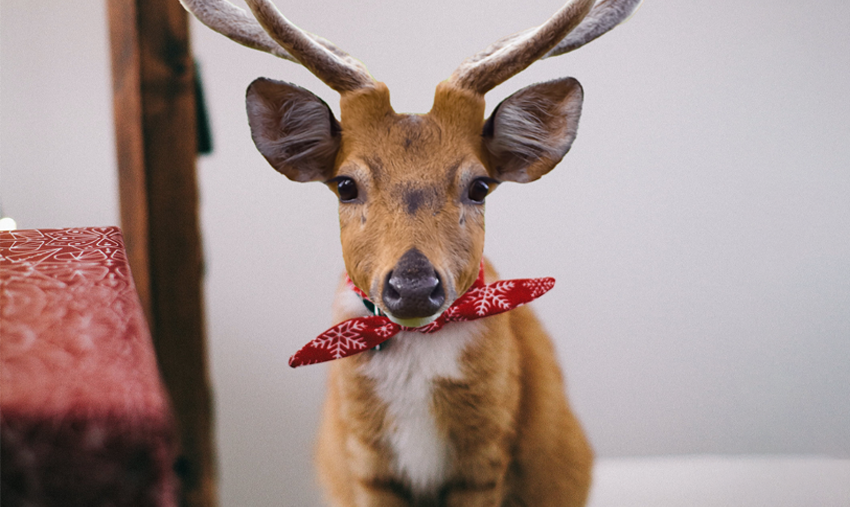Birds Do It, Bees Do It
We keep finding more cross-species hybrids - and the reasons why are only sometimes horrible

When we talk about animal hybrids, you may envision the sci-fi vivisection/hybrid experiments inhabiting the Island of Dr. Moreau, or we can defer to O.G. naturalist Charles Darwin, who believed that natural selection was incompatible with hybridization.
But no matter how weird it might seem, cross-species coupling is here to stay – and hey, you and I are partly to blame! Because of climate change, habitat destruction, and animals “mingling” in captivity, cross-species boinking is becoming more and more prevalent. At least we can give them weird names!
Pizzly/Grolar Bears
Reason for Hybridization: Climate change
Whether you call it a “pizzly,” “grolar,” or “nanulak,” this apex-predator bear has become more common across Northern Canada since the mid-aughts. As polar bears move farther south to find food, and grizzlies expand northward thanks to the same warmer temperatures, they’re meeting and swiping right on the semi-regular.
The resulting offspring exhibit mostly polar-bear behavior, but are a bit smaller – which is to say, still not small. On average they’re five feet tall at the shoulder, and weigh about half a ton. They can survive in warmer climates because of their grizzly genes, which means they “could be a sad but necessary compromise given current warming trends,” according to LiveScience.
Beefalo
Reason for Hybridization: Farmers on a mission
Farmers have found a way to improve beef production by combining hulking (yet aggressive) bison with more docile and easier-to-raise domestic cattle. Beefalo cows and bulls are very fertile—bulls can “settle females either by natural service or by artificial insemination”—making them attractive to cattle ranchers. They also tolerate both cold climates and hot climates, don’t need extensive grain feeding, and the meat is (allegedly) healthy and mouth-wateringly delicious.
(Also, we’re totally calling it “natural service” from now on.)
Various Canids
Reason for Hybridization: You’re a dog, I’m a dog, let’s do this thing
The “dogxim,” discovered in Brazil, is the first known fox-dog hybrid. We’re looking forward to the Disney sequel, The Fox and the Hound in Love.
The coywolf, descended from various mixes of coyotes, wolves, and dogs, is known to be larger than a coyote, but smaller than a wolf. Dingo-dogs vary in appearance depending on the breed of dog they descend from – but no matter what they look like, they tend to misbehave a lot, even in the wild. They’re categorized as “pests” in their native Australia. (Meanwhile, everyone loves Australian dogs.)
Various Big Cats
Reason for Hybridization: Captivity
Big cats rarely cross paths in nature—they often live on different continents, after all. According to the especially-catty Florida nonprofit Big Cat Rescue, “The only reason that ligers, tigons, white lions or white tigers exist at all is because stupid people will pay to see them.” Noted! Let’s catalog ‘em.
The offspring of a male lion and a tigress, the liger is the largest of these hybrids—the heaviest one ever recorded weighed in at an eye-popping 1,600 lbs. Ligers behave more like lions but show tiger “traits” like the love of water and striped backs. (And no, they are not bred for their skills in magic.) When the parental genders are swapped, you get a much rarer, much smaller tigon, which looks more like its tiger papa, but loves to roar and socialize like its lioness mama.
A leopon (boy leopard + girl lion) is big like a lion but can swim and climb like a leopard, which is one of the scarier sentences we’ve ever typed. The “lipard” hardly ever happens, because of incompatible size “issues” – a male lion outweighs a female leopard some six times over.
Other cat hybrids are pumapards (puma + leopard), jaglions (black jaguar + lioness) and cheetohs (Bengal cat + ocicat).
Green Sea Slug
Reason for Hybridization: Weird natural phenomenaThis strange hybrid—also called the eastern emerald elysia—is actually part animal, part plant. Yes, you heard that right: Green sea slugs “kidnap” some genes and photosynthesize organelles from algae. The slug takes enough that it has “an entire plant chemical-making pathway inside an animal body”. Their ability to produce chlorophyll, instead of ingesting it from the food it eats, gives it its bright green hue. Nature is bizarre!
